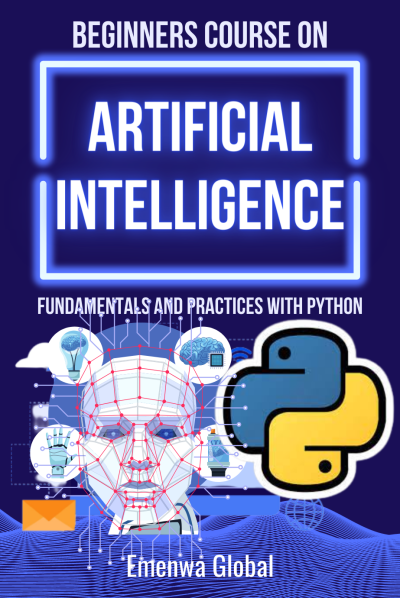
BEGINNERS COURSE ON ARTIFICIAL INTELLIGENCE: Fundamentals and Practices With Python by Emenwa Global
BEGINNERS COURSE ON ARTIFICIAL INTELLIGENCE: Fundamentals and Practices With Python by Emenwa Global
The most important thing you must learn here is the best language for Artificial Intelligence as a beginner. There are tons of languages that are designed specifically for AI and machine learning. But the best bet for any beginner is Python.
I say this because it’s the industry standard for machine learning and artificial intelligence. If you get a job in this field, chances are you’re probably using Python to do most of your work. It’s great because you don’t only use it for machine learning, Python can do many other things, and it’s probably one of the more accessible languages to pick up and start using as a beginner.
I also recommend Python because it has the most modules (libraries) and community support for machine learning and artificial intelligence.
I recommend starting with Python. As you get more advanced, you can move into more specific languages, but python is a great one to get started with.
Artificial intelligence uses computers and technology to simulate the human mind’s problem-solving and decision-making abilities. In its most basic form, artificial intelligence is a field that combines computer science and large datasets to solve problems. It also includes the subfields of machine learning and deep learning, which are commonly referenced in the context of artificial intelligence. AI algorithms are used in these areas to develop expert systems that make predictions or classifications based on input data.
In its most basic form, AI (artificial intelligence) refers to systems or robots that mimic human intelligence to execute tasks and can iteratively improve themselves based on the data they collect. AI manifests itself in a variety of ways. Here are a few examples:
AI is used by chatbots to more quickly and effectively comprehend client questions and respond accurately.
AI is used by smart assistants to extract essential data from massive free-text datasets to optimize scheduling.
Based on the watching patterns of consumers, recommendation engines can generate automated recommendations for TV programs.
Rather than focusing on one format or function, AI is far more about the process and the ability for superhuman reasoning and data processing. Although ideas of high-functioning, human-like robots taking over the world conjure up images of AI, the technology is not intended to replace people. Its goal is to vastly improve human skills and contributions. As a result, it is a vital commercial asset.
Buy the book, and follow the author on social media:
Visit the Author’s Twitter page.
Author Bio:
Emenwa Global instructors are industry experts with years of practical, real-world experience building software at industry-leading companies. They are sharing everything they know to teach thousands of students around the world, just like you, the most in-demand technical and non-technical skills (which are commonly overlooked) in the most efficient way so that you can take control of your life and unlock endless exciting new career opportunities in the world of technology, no matter your background or experience.
Another important philosophy is that our courses are taught by real professionals, software developers with real and substantial experience in the industry, who are also great teachers. All our instructors are experienced, software developers.
Whether you are a beginner, looking to learn how to program for the first time, brush up on your existing skills, or learn new languages and frameworks, the Academy has you covered.
This content was originally published here.


